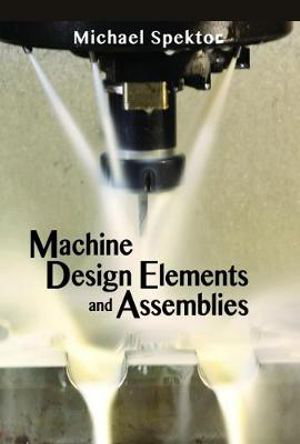
PublishedIndustrial Press, March 2019 |
ISBN9780831136192 |
FormatHardcover, 500 pages |
The course of Machine Elements or Machine Design is one of the most fundamental that students take. It focuses on single components of machines in isolation, but does not frame them in the context of broader assemblies. Existing textbooks used for these courses likewise give very little attention to assemblies, and to the order in which the various machine elements are presented.
These texts also contain a considerable amount of supplemental materials that are prerequisites for the course, but are not actually taught in the course. The result is that the books are bloated (often about 1,000 pages or more), and quite expensive. Over Michael Spektor's illustrious career in industry and academia, he has searched for a better resource from which to teach his students, and a way to improve current texts to better reflect the proper structure of how machine elements are presented, and introduce the calculations and design considerations necessary for creating assemblies. The result is this textbook, which is the first text available to students of the course Machine Design (also called Machine Elements) that truly prepares them to meet industry challenges by accelerating their introduction to solving real-life engineering programs. Machine Design Elements and Assemblies methodically describes the material in a way that broadens and deepens the engineering knowledge related to the design of mechanical systems, in a much more concise, less expensive package. FEATURES: The sequence used in the book allows students to address not just the design peculiarities of a single element, but also the design considerations of an assembly. Each chapter involves an element that supports the previous chapter, creating a simple assembly, and more and more complex assembly as the student delves further into the book. This resembles the work of actual engineers in practice. Examples and problems solved in each chapter support this structure as well, resembling typical real-life projects in industry. An affiliated website boasts hundreds of additional examples and problems for students and instructors.

